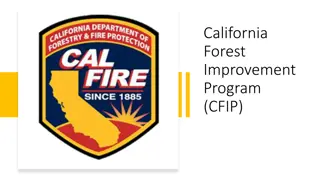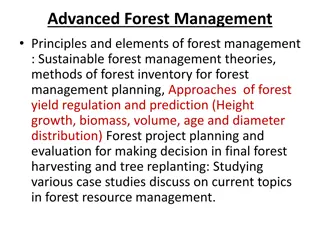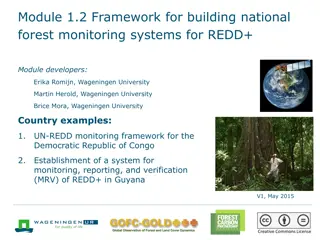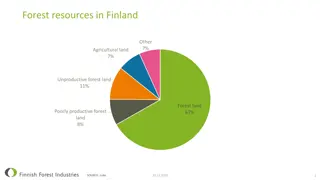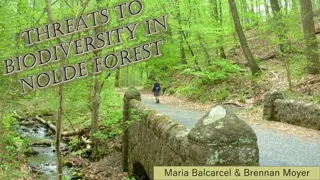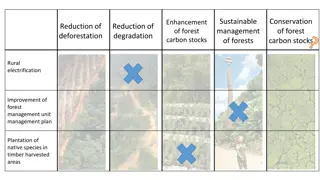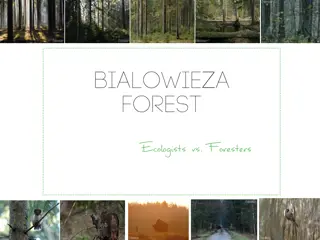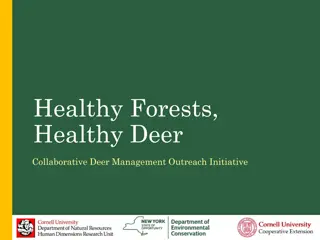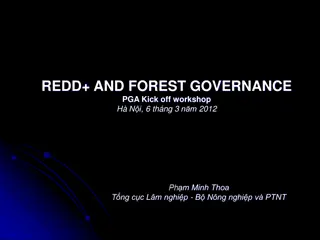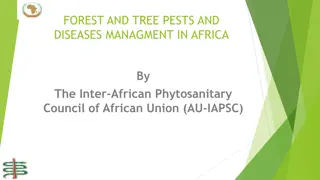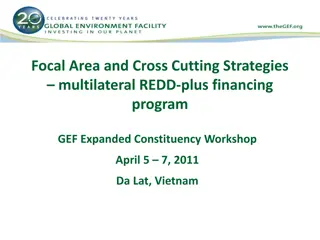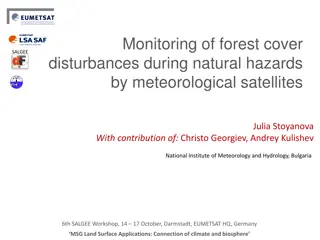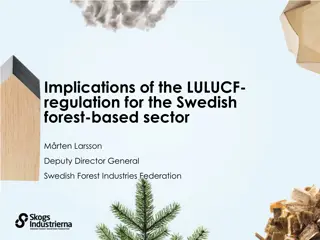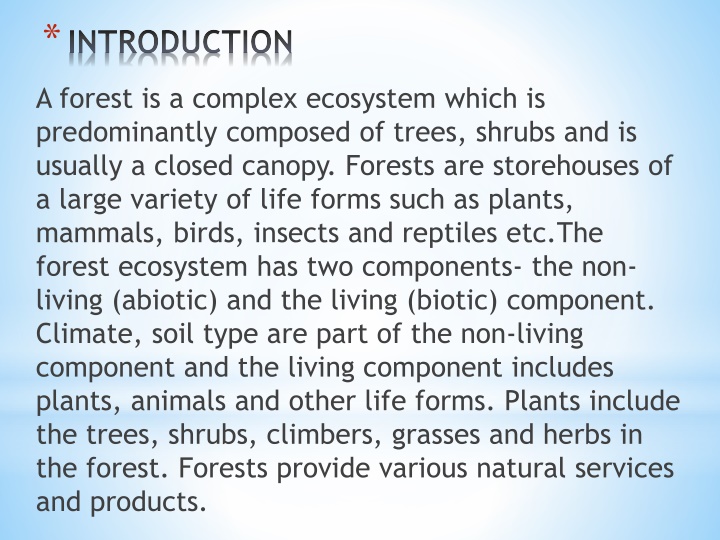
Exploring Diverse Forest Ecosystems: Evergreen, Mangrove, Deciduous
Delve into the rich ecosystems of different forest types including Evergreen, Mangrove, and Deciduous forests. Discover the unique characteristics, biodiversity, and importance of these forest environments supporting a variety of plant and animal life forms.
Download Presentation

Please find below an Image/Link to download the presentation.
The content on the website is provided AS IS for your information and personal use only. It may not be sold, licensed, or shared on other websites without obtaining consent from the author. If you encounter any issues during the download, it is possible that the publisher has removed the file from their server.
You are allowed to download the files provided on this website for personal or commercial use, subject to the condition that they are used lawfully. All files are the property of their respective owners.
The content on the website is provided AS IS for your information and personal use only. It may not be sold, licensed, or shared on other websites without obtaining consent from the author.
E N D
Presentation Transcript
*INTRODUCTION A forest is a complex ecosystem which is predominantly composed of trees, shrubs and is usually a closed canopy. Forests are storehouses of a large variety of life forms such as plants, mammals, birds, insects and reptiles etc.The forest ecosystem has two components- the non- living (abiotic) and the living (biotic) component. Climate, soil type are part of the non-living component and the living component includes plants, animals and other life forms. Plants include the trees, shrubs, climbers, grasses and herbs in the forest. Forests provide various natural services and products.
*DEFINITION A forest is a large area dominated by trees. Hundreds of more precise. A forest is a large area where trees grow close together
*EVERGREEN FOREST * Evergreen Forests grow in the high rainfall areas of the Western Ghats, North Eastern India and the Andaman and Nicobar Islands. These forests grow in areas where the monsoon lasts for several months. The trees overlap with each other to form a continuous canopy. Thus very little light penetrates down to the forest floor. Only a few shade living plants can grow in the ground layer in areas where some light filters down from the closed canopy. The forest abounds in animal life and is most rich in insect life.
*MANGROVE FOREST * Mangrove Forests grow along the coast especially in the river deltas. These plants are able to grow in a mix of saline and fresh water. They grow luxuriantly in muddy areas covered with silt that the rivers have brought down. The mangrove trees have breathing roots that emerge from the mud banks.
MANGROVE FOREST *MANGROVE FOREST *
*DECIDUOUS FOREST * Deciduous Forests are found in regions with a moderate amount of seasonal rainfall that lasts for only a few months. Most of the forests in which Teak trees grow are of this type. The deciduous trees shed their leaves during the winter and hot summer months. In March or April they regain their fresh leaves just before the monsoon, when they grow vigorously in response to the rains. The forest frequently has thick undergrowth as light can penetrate easily onto the forest floor.
DECIDUOUS FOREST *DECIDUOUS FOREST * Deciduous forest during the beginning of the rain
*CONIFEROUS FOREST * Coniferous Forests grow in the Himalayan mountain region, where the temperatures are low. These forests have tall stately trees with needlelike leaves and downward sloping branches so that the snow can slip off the branches.
*BROADLEAVED FOREST * Broadleaved Forests have several types, such as evergreen forests, deciduous forests, thorn forests, and mangrove forests. Broadleaved forests have large leaves of various shapes.
*WET EVERGREEN FOREST * Wet evergreen forests are found in the south along the Western Ghats and the Nicobar and Andaman Islands and all along the north-eastern region. It is characterized by tall, straight evergreen trees that have a root on three sides like a tripod that helps to keep a tree upright during a storm. These trees often rise to a great height before they open out like a cauliflower. The more common trees that are found here are the jackfruit, Jamun, Mango, and Hollock. The trees in this forest form a tier pattern: shrubs cover the layer closer to the ground, followed by the short structured trees and then the tall variety.
*THORN FOREST * Thorn Forests are found in the semi- arid regions of India. The trees, which are sparsely distributed, are surrounded by open grassy areas. Some of these trees have small leaves, while other species have thick, waxy leaves to reduce water losses during transpiration. Thorn forest trees have long or fibrous roots to reach water at great depths. Many of these plants have thorns, which reduce water loss and protect them from herbivores.
*SEMI-EVERGREEN FOREST * Semi-evergreen forests are found in the Western Ghats, Andaman and Nicobar Islands, and the Eastern Himalayas. Such forests have a mixture of the wet evergreen trees and the moist deciduous trees. The forest is dense and is filled with a large variety of trees of both types.
*ALPINE FOREST * These grasslands start at an elevation of above 3000m grow up to the region just below the snowline. They are common in both the main Himalayan regions as well as the barren cold deserts of the Tran Himalaya. Low alpine grasslands are common with the vegetation not growing higher than 1.5m. The vegetation consists mainly of the black juniper, the drooping juniper; willow are the common trees.


